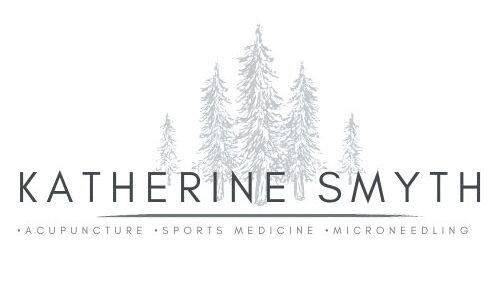
A Holistic Approach to Healing
Acupuncture is a cornerstone of Traditional Chinese Medicine (TCM), focusing on the body’s intricate meridian system. According to TCM, qi (vital energy) and blood circulate through channels known as meridians, linking internal organs with external tissues. The main goal of acupuncture is to balance the flow of qi and blood, promoting health and addressing various ailments.
How Acupuncture Works
In acupuncture treatment, practitioners insert fine, sterile needles into specific points on the body, known as acupoints. These points are strategically located along meridians and are believed to be centers of neuromodulation. By stimulating these acupoints, a cascade of biochemical and neurophysiological reactions occurs. These reactions include the release of natural painkillers like endorphins, modulation of neurotransmitter activity, and activation of the hypothalamic-pituitary-adrenal axis. Consequently, these effects help relieve pain, reduce inflammation, and improve overall physiological function.
Integrative Benefits of Acupuncture

Acupuncture integrates traditional healing with modern medical knowledge, addressing both symptoms and underlying causes of various health conditions. For centuries, it has been used to manage a wide range of issues, from chronic pain and digestive disorders to respiratory diseases and mental health conditions. By precisely regulating the flow of qi and blood, acupuncture aims to restore balance, promote optimal health, and support the body’s natural healing processes.
Understanding the Acupuncture Treatment Process
Needle Insertion and Sensations
In clinical practice, acupuncturists select specific acupoints, motor points, or dry needling points based on the patient’s health concerns. They use very fine, sterile needles, typically between half an inch to three inches long. When placed correctly, these needles often cause sensations like soreness, heaviness, or numbness—indications that the body’s healing responses are being activated.
Duration and Needle Manipulation
The needles usually remain in place for 15-30 minutes. During this time, the practitioner may manipulate them through techniques like lifting, thrusting, twisting, or rotating to enhance therapeutic effects. Additionally, in electro-acupuncture, electrical currents are applied to the needles, providing further stimulation. This added stimulation can modulate nerve activity and promote pain relief.
Moxibustion: Heat Therapy in Acupuncture
Moxibustion: Heat Therapy in Acupuncture

What is Moxibustion?
Moxibustion is a technique that involves burning moxa, a preparation of dried Mugwort (Artemisia vulgaris), near the skin. This generates heat and stimulates specific acupoints. It is particularly effective in warming and invigorating the flow of qi and blood. For instance, it can dispel cold and dampness while strengthening the body’s vital energy.
Combining Moxibustion with Needling
Needle-warming moxibustion, which combines needle insertion with moxa heat, is especially useful for chronic conditions like arthritis. This combined approach enhances the therapeutic effects of both techniques.
Intramuscular Stimulation (IMS): Modern Acupuncture for Pain Relief
How IMS Works

Intramuscular Stimulation (IMS) merges traditional acupuncture with modern neurophysiology to treat chronic pain and muscle dysfunction. Practitioners insert fine needles into specific trigger points within tight or dysfunctional muscles. This elicits a localized twitch response, which helps release muscle tension, improves blood flow, and stimulates tissue healing.
Benefits of IMS
IMS is highly effective for neuropathic pain conditions like chronic back pain, sciatica, and tendinitis. By targeting pain at the neuromuscular level, IMS restores normal muscle function, alleviates pain, and enhances mobility.
Dry Needling: Targeting Myofascial Pain
The Dry Needling Process

Dry needling focuses on relieving muscle pain and dysfunction by inserting fine needles into myofascial trigger points—areas of tightness within muscles. This technique specifically targets the anatomical and physiological aspects of muscle and connective tissue.
Benefits of Dry Needling
When the needle is inserted, it triggers a local twitch response. This response releases muscle tension, improves blood flow, and promotes healing. As a result, dry needling is commonly used for conditions such as muscle pain, tension, and stiffness, providing effective relief and improving overall function and mobility.
Conditions Treated by Acupuncture, IMS, and Dry Needling
Acupuncture is recognized by the International Medical Society (IMS), the World Health Organization (WHO), and other health organizations for its effectiveness in treating a wide range of conditions. Scientific research supports its use in the following areas:
Pain Management
- Musculoskeletal pain (e.g., injuries, sprains, back pain, sciatica)
- Neuropathic pain (e.g., carpal tunnel syndrome, fibromyalgia)
- Headaches and migraines
- Arthritis and temporomandibular joint (TMJ) dysfunction
Pregnancy-Related Issues
- Alleviating morning sickness
- Correcting breech presentation
- Inducing labor
- Managing pelvic pain
- Supporting postnatal recovery
Gynaecological Health
- Menopausal symptoms (e.g., hot flashes)
- Menstrual disorders (e.g., dysmenorrhea, amenorrhea)
Digestive Disorders
- Nausea and vomiting
- Gastroesophageal reflux disease (GERD)
- Acute and chronic gastritis
- Peptic ulcers
- Biliary colic
Respiratory and Cardiovascular Conditions
- Stroke rehabilitation
- Hypertension and hypotension
- Asthma and allergic rhinitis (e.g., hay fever)
Immune Function Support
- Enhancing immune response in cancer and AIDS patients
- Reducing adverse reactions to chemotherapy and radiation therapy
Addiction Treatment
- Reducing cravings and withdrawal symptoms for nicotine, alcohol, and drugs
Neurological and Psychological Disorders
- Tinnitus and Meniere’s disease
- Insomnia
- Depression and anxiety

Conclusion
Acupuncture provides a comprehensive approach to healthcare, blending traditional practices with modern science to support both physical and mental well-being. Acupuncturists are trained in various techniques, including acupuncture, Intramuscular Stimulation (IMS), motor point therapy, and dry needling. Consult with your acupuncturist to determine the best treatment plan for your needs



